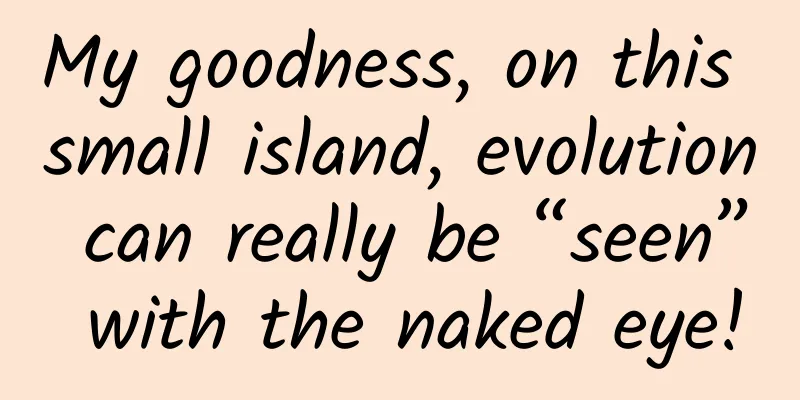My goodness, on this small island, evolution can really be “seen” with the naked eye!

|
In just a few dozen generations, the appearance is very different. The beautiful Koster Islands, located on the west coast of Sweden, are one of the sunniest places in Sweden, attracting nearly 100,000 tourists every year. The sea breeze is gentle, the scenery is beautiful, and there is an abundance of seafood such as shrimp, oysters, and crabs. However, even such a beautiful place cannot escape the ecological crisis. In May 1988, a toxic algae, Chrysochromulina polylepis, suddenly exploded and reproduced, causing serious impacts on local marine life, including the rock periwinkle (Littorina saxatilis), which is widely distributed along the North Atlantic coast. Their numbers suddenly dropped sharply, and the populations on some small islands even became extinct. Even after four years, they are still hard to find in some places. In 1992, Kerstin Johannesson, a marine ecologist at the University of Gothenburg in Sweden, asked whether it was possible to reintroduce rock periwinkles to islands where they had become extinct. Thus began a 30-year ecological experiment. Surprisingly, in addition to restoring the population, this experiment also revealed a bigger discovery - evolution can be incredibly fast. In just a few decades, or even shorter, the rock periwinkle has undergone changes visible to the naked eye. The research results were recently published in Science Advances. Waves and crabs Rock periwinkles usually live in two completely different environments: one is the coast where crabs are densely packed, and the other is a mini rocky island where crabs are scarce but the waves are fierce. Different environments have created different survival strategies, and the rock periwinkles living in these two environments also show obvious differences in body size, shell shape, shell color and even behavior. Rock periwinkles that live in areas with many crabs are called " crab ecotypes ": they are large, with thick and strong shells, narrow and elongated shell openings, and mostly no patterns on the shell surface; and in order to avoid predators, they behave more cautiously. In contrast, the " wave ecotype " that lives in areas with waves is much lighter: they are smaller, with thin shells, wide and round shell openings, often with unique colors and patterns on the shells, and behave more boldly. In the Koster Islands, both ecotypes of rock periwinkles exist, and may even live side by side on the same island or only a few hundred meters away from each other. "Crab ecotype" and "wave ecotype" rock periwinkles live in different environments (Image source: original paper) It was in this context that Johannesson began her experiment. She planned to introduce the rock periwinkles of the "crab ecotype" into a habitat that originally belonged to the "wave ecotype". In other words, she wanted to see what would happen when a group of periwinkles originally adapted to the crab environment were placed in an unfamiliar environment with strong waves. In May 1992, Johannesson and his colleagues collected about 700 adult rock periwinkles of the "crab ecotype" from a crab-dense coastline. Only 320 meters away from this coastline, there is a small rock island of only about 3 square meters in size, where the original periwinkle population has never recovered. This island is also about 160 meters away from the nearest island where the "wave ecotype" periwinkles still inhabit. Figure A: The rocky island in the sea where scientists transplanted the "crab ecotype" rock snails; Figure B: The rocky island in the sea photographed by scientists from the area where the "crab ecotype" snails were collected; Figure C: The area where scientists collected the "crab ecotype" snails is about 320 meters away from the rocky island in the sea, and the island is about 160 meters away from the nearest island where the "wave ecotype" snails still live; Figure D: "Crab ecotype" and "wave ecotype" snail samples (Image source: original paper) This isolated island became the site of the experiment. The researchers transplanted the 700 adult snails to the island, and when they returned a month later, they found that only about 50 were left. Of course, some juveniles that were invisible to the naked eye may have been released on the island. Since then, the research team has begun to return to the island for sampling at irregular intervals. These snails can reproduce one or two generations each year, so in 30 years, they have undergone about 60 generations of evolution. Surprisingly, the transplanted periwinkles quickly showed adaptability to the new environment. The researchers said that most of the changes they observed were even completed within the first three years. And 30 years later, the rock periwinkles on the island have undergone earth-shaking changes. They have become more like the "wave ecotype": the shell is wider, the shell is thinner and smoother, the color is richer, and nearly half of the shells have lines. Today, they are almost indistinguishable from the "wave ecotype" population on nearby islands. Changes in rock periwinkles over 30 years (Image credit: Institute of Science and Technology Austria) In addition to the significant changes in appearance, the genomes of these rock periwinkles have also undergone adjustments consistent with the researchers' expectations: many gene inversions that are more common in the "wave ecotype" have appeared in their chromosomes. The researchers pointed out that these genetic characteristics did not evolve out of thin air. After all, for a population, if the number of individuals is limited and the generation replacement rate is slow, it usually takes a long time to evolve new adaptive characteristics from scratch, because it is difficult to accumulate enough beneficial mutations in a short period of time. So why can these periwinkles undergo such significant changes in just a few dozen generations? The researchers believe that there may be two factors. On the one hand, the area where they initially collected "crab ecotype" individuals is near a large number of "wave ecotype" populations. Therefore, gene flow may have already occurred quietly, causing these "crab ecotype" individuals to also carry some alleles related to wave adaptation , but at a lower proportion. On the other hand, "wave ecotype" individuals on other nearby islands may also drift to this rocky island, bringing new genetic variations. Today, the once deserted island has been repopulated by periwinkles, whose population has grown to about 1,000, becoming a stable and prosperous new group. This experiment also reveals an important fact for us: in the face of drastic environmental changes, the rapid evolution of species is not out of reach, and it can occur quickly within just a few dozen generations. In fact, human activities are also changing the evolution of species. This also brings us to a question worth thinking about: humans are transforming the earth so quickly, is there enough time left for these creatures? References [1]https://en.wikipedia.org/wiki/Koster_Islands [2]https://www.science.org/doi/10.1126/sciadv.adp2102 [3]https://ista.ac.at/en/news/evolution-in-real-time/ Planning and production Source: Global Science (ID: huanqiukexue) Editor: Zhong Yanping Proofread by Xu Lailinlin |
<<: Pollen and catkins season, these drugs are more life-saving than loratadine
Recommend
Huawei Honor 3X User Experience
1. Standby, two days of continuous testing, especi...
Gui Haichao wore glasses on board the Shenzhou spacecraft! What should you pay attention to when wearing glasses in space? Learn more →
At 9:31 am Beijing time on May 30, the launch of ...
Tesla electric car, BMW M5 collide: the result is exaggerated
Video of a car accident involving an M5 high-perfo...
How big is the space for content e-commerce that directly realizes the value of the knowledge economy?
At present, with the popularity of " Fenda &...
Kuaishou, you can record everyone’s life, but please don’t distort our values!
"In life, there is no distinction between hi...
Alien spacecraft? Asteroid? Five years ago, its arrival puzzled scientists
No romance can compare to the sea of stars Peop...
A brief discussion on iOS screen adaptation practice
Screen adaptation in front-end development is act...
After being cheated, it became a priceless treasure
Today's protagonist is not an ordinary wardro...
Copyright issues are too difficult to deal with? The most life-saving copyright report in history is here!
After the content of Huaban.com was rectified A l...
Volvo confirms listing plan, Geely's equity dilution
Recently, Volvo Cars, a subsidiary of Geely, issu...
Here, let me teach you how to crack an iOS APP
Today I will give you some hard knowledge. There ...
How to start Baidu information flow advertising from 0 to 1?
Baidu information flow was developed after Baidu ...
China Electronics Society: 2021 China Robotics Industry Development Report
The report shows that even though the scale of Ch...
Public account basic operation tutorial_E guest_HD no watermark
Course Schedule Section 1: Registration Section 1...
Summary of experience after App Store review was rejected 5 times!
Including the Beta version review, our app has be...









